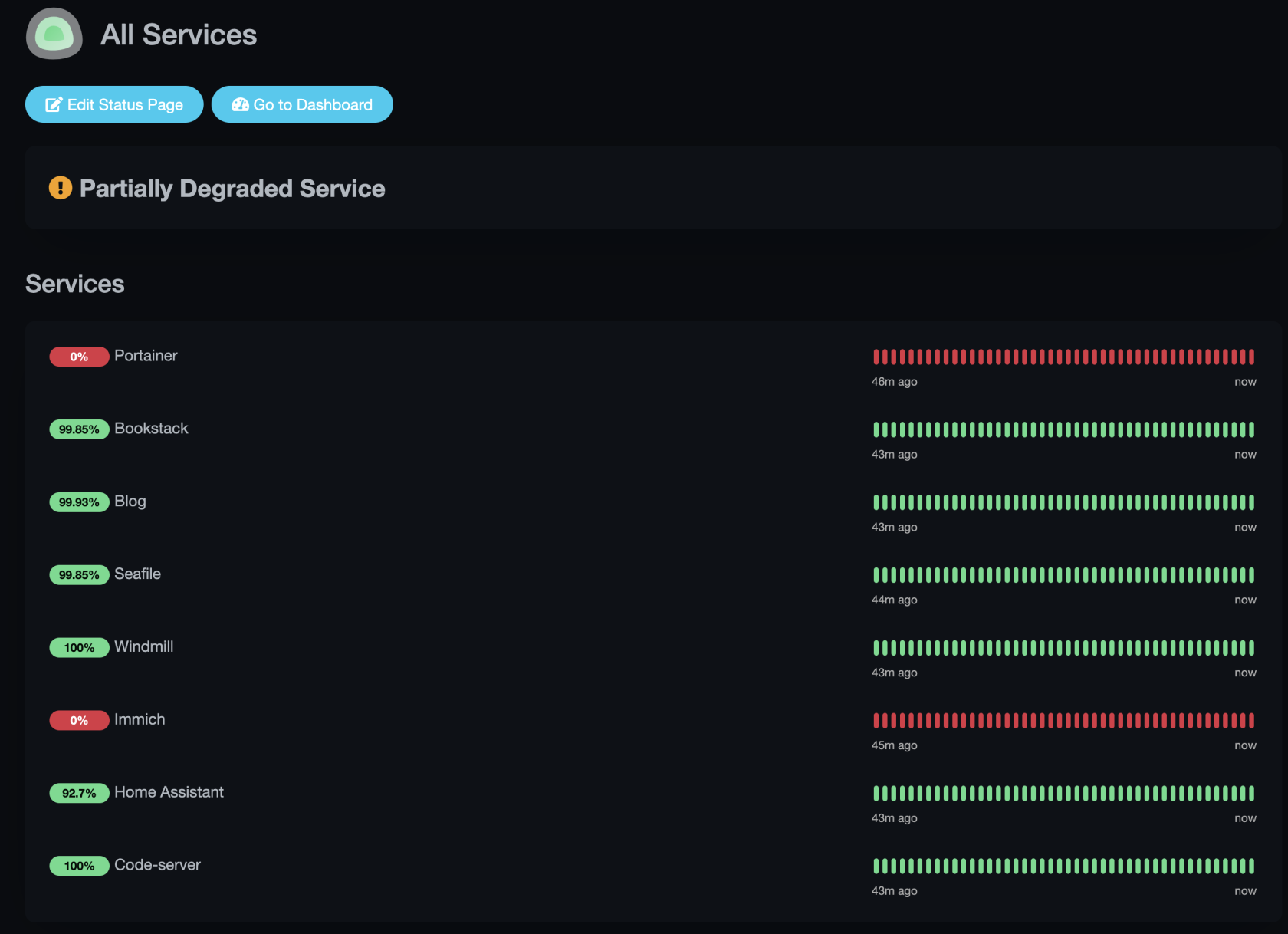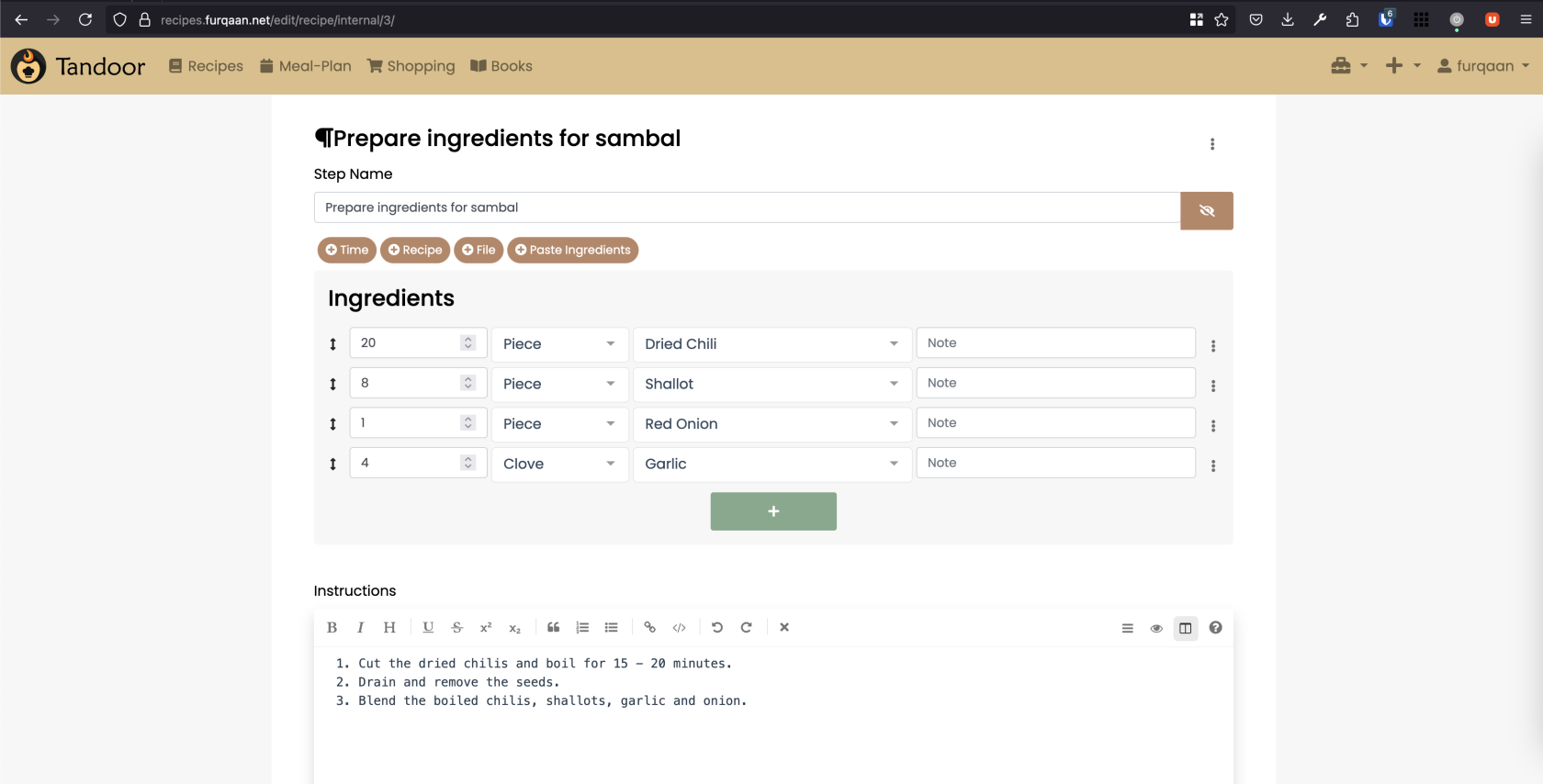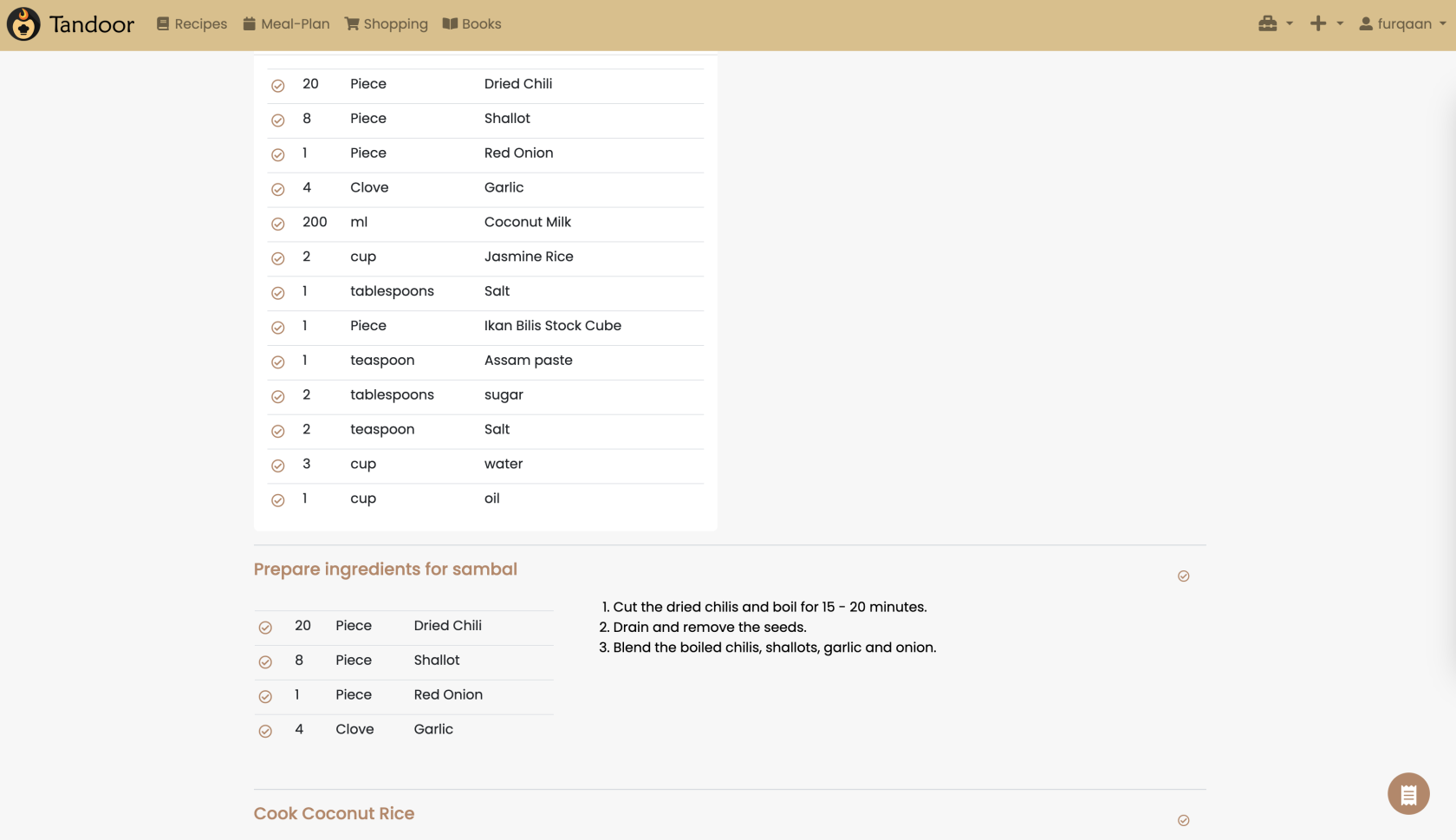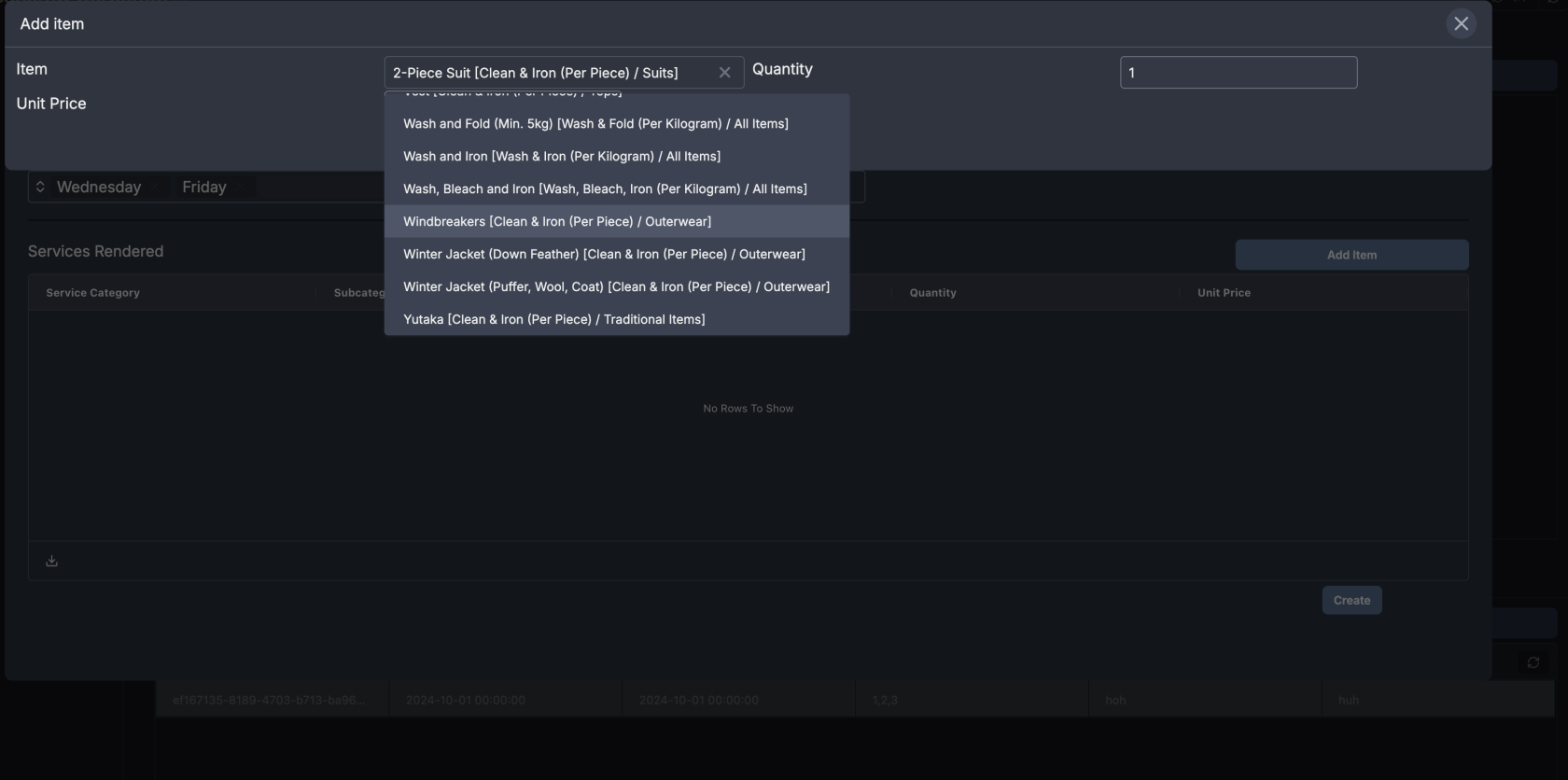Happy New Year, and Happy Lunar New Year!
January was a mix of being busy and just not wanting to do anything because of what was coming. Well, the Lunar New Year was coming, and my newborn was coming. Congratulations to my wife and me!
Not much changed on my home server, but I did add this cool new uptime monitoring tool—Uptime Kuma. I can’t believe how easy and convenient it was to set up. It’s a really simple product, but it gets the job done. I even suggested it to my colleague for monitoring our services at work.

Exploring Apps to Self-Host #
I could scroll through this page forever, trying every single one of these apps. But I had a couple of specific apps I was looking for over the past few weeks:
- Recipe tracker
- Grocery stock tracker
- Notes app
- Invoice tracker
I stumbled upon a few, but I didn’t really enjoy using them. For the recipe tracker, I think the best one was Tandoor. I don’t know—it doesn’t feel intuitive to create recipes. The editor looks kind of okay, but I just don’t feel it.
In the editor: #
And when it’s published: #
For the grocery tracker, there was Grocy. I might give Tandoor another try later, but Grocy… I feel like if I have to teach my helper and my wife how to use it, then it’s not going to work. This should be a key consideration when designing any app—it should be extremely user-friendly. In my mind, for them, using an app itself is additional work, but having to learn how to use it and then remembering to use it? Grocy was just not it. I uninstalled it immediately, lol.
Researching New Apps to Build #
Actually, I see this as an ongoing thing.
I highly suspect I’m neurodivergent. I feel it in myself and see the symptoms. And I realize that all this while, I have, maybe, naturally just learned how to navigate life with it. So every time I try something and it doesn’t suit me, I ask myself, Can I build it? It looks pretty simple to build.
I’m obsessed with simple apps. I have a love-hate relationship with apps that are super customizable. I love to tinker, but it often becomes overwhelming and distracting. So these days, I prefer apps that do one thing and do it well.
So the problem starts when I look for a solution to a problem, realize I can’t find a good one, and then decide to build one. Then I go down this rabbit hole of researching and designing how to build it, looking for libraries, and whatnot—and then that’s a whole day gone. Well, on good days, just one day.
But some ideas have stuck with me, and I hope to work on them over the next couple of months:
- A super simple note-taking app that works for my thought process.
- A Telegram bot that processes receipts using Python libraries and extracts line items. I’ll use it to track finances and predict which groceries might run out soon and need purchasing.
Windmill #
I’m also currently helping a friend with her startup. I suggested she use no-code tools to speed up development, especially for the admin dashboard. I had Windmill but had never used it, so I decided to give it a go. To create a simple CRUD for a basic structure like this:
It took me about three days, including the time to learn Windmill. I think it’s really not that bad. But it’s definitely not for someone with no coding experience. A little knowledge of databases and programming goes a long way. For this, I used some JavaScript, Python, and mainly PostgreSQL.
This included things like tables, models, selecting items from a list, etc.:
Improving the Lighting Situation at Home #
Outside of tech (though still a bit tech-related), I watched a TikTok video where a guy said that to simply elevate the look of your house, you just need to add more lights—small lights, not big ones. So I think I spent a couple of nights browsing Taobao for lamps. I was also looking for smart ones since I have Home Assistant. In the end, I skipped the smart ones and decided to just get Ikea’s smart bulbs. I was also planning to change my downlights to smart ones because sometimes the tri-color ones go out of sync, and it pisses me off. LOL. Imagine this—five of them are yellow, and one is white. Currently, only the light switches are smart.
I was also researching how to make my dumb ceiling fans smart. I haven’t been able to find any Zigbee-RF 433MHz controllers. The ones that exist are quite pricey, and I don’t even know if they’ll work with Home Assistant. So the safest bet is to build my own. I have a couple of NodeMCUs at home, and I intend to buy some RF transmitters and receivers—they’re like $2 a piece. I’ll probably control them via Home Assistant using MQTT or something. I didn’t spend much time researching this yet, but it’s on my backlog.
Backup Plan #
Lastly. I think I spent a lot of time thinking about backups. In fact, I’ve been thinking about it since the first few weeks of my homelab journey, and even more so in January since things have settled down a bit. I have my hardware in place, and the setup likely won’t see any drastic changes. I looked at various options and decided that having an offsite backup is the most cost-efficient. Amazon S3 Glacier is too expensive for data recovery, and using Backblaze B2 felt quite expensive too, considering it costs almost as much as Google One.
So I’m considering buying a mini PC, something like a Beelink, and attaching a DAS to it. I’ll probably install Debian on it or use my spare Unraid license. I’ll mainly use Restic to run daily backups.
On top of that, I’m also thinking of buying an external hard drive to back up important stuff locally every month—mainly photos and documents.




